Philips OLED769 is the entry-level OLED model from the Dutch manufacturer for 2024, but don't let that mislead you. OLED769 surprises with its image quality and several interesting features. Thanks to OLED technology, the colours are truly vibrant, and the contrast is very good – deep blacks and bright lights displayed on this screen make a difference, especially when watching evening series. When it comes to motion fluidity, OLED769 performs really well. The 120 Hz panel handles dynamic scenes excellently, whether it's sports or gaming. When playing on consoles, the TV doesn’t disappoint either – 4 HDMI 2.1 ports support VRR and ALLM, and the fast response time ensures smooth and responsive gameplay. And what about Ambilight? It's a classic Philips feature and one of those functions that either gets loved or hated. In this model, it works very well – the backlighting responds to the content on the screen and adds ambience, especially in a dark room. It's not something everyone will consider essential, but it makes an impression in the evenings – at least on us. As for the new TitanOS operating system, it leaves us with mixed feelings. It runs quickly, but it lacks some popular applications. More demanding users may miss the flexibility that previous Philips systems (GoogleTV) offered. Philips OLED769 is a good choice for those looking for a TV with beautiful picture quality and the unique addition of Ambilight. The image quality and motion fluidity will satisfy most users, and the minor limitations of the operating system won't be a hurdle if you're focusing on basic apps. It's a solid option for both watching movies and playing games.
- Matching (Score)
- Our verdict
- TV appearance
- Where to buy
- Contrast and black detail
- HDR effect quality
- Factory color reproduction
- Color reproduction after calibration
- Smoothness of tonal transitions
- Image scaling and smoothness of tonal transitions
- Blur and motion smoothness
- Console compatibility and gaming features
- Input lag
- Compatibility with PC
- Viewing angles
- TV efficiency during daytime
- Details about the matrix
- TV features
- Apps
- Playing files from USB
- Sound
Philips OLED769 vs Samsung S85F OLED
Direct compare
OLED769 / AMIBLIGHT TV
S85F / FAE / FAU
Available screen sizes: 55”

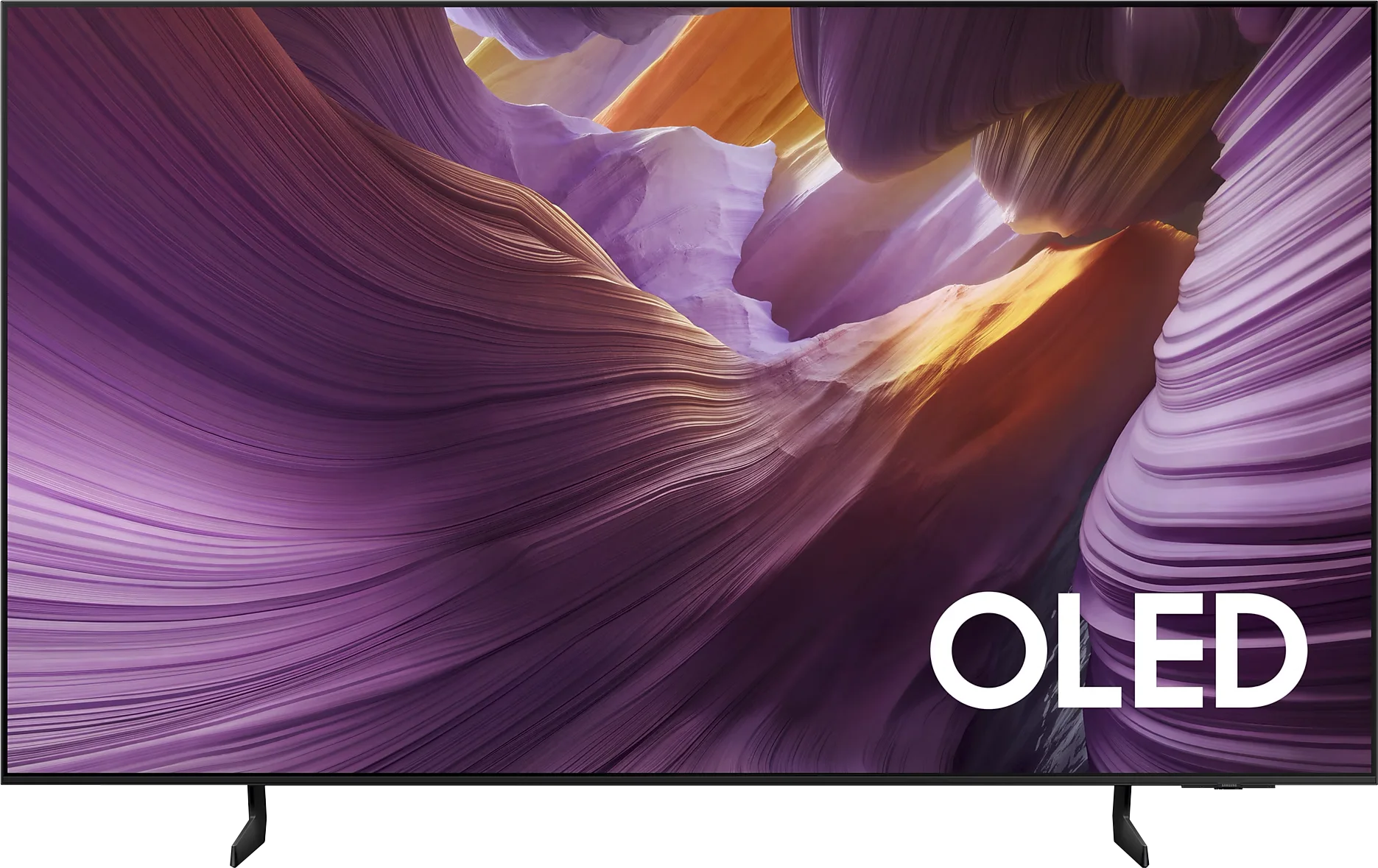
Panel type: WRGB OLED
Resolution: 3840x2160
System: Titan OS
Model year: 2024
Complete the survey to find out the result

Panel type: QD-OLED
Resolution: 3840x2160
System: Tizen
Model year: 2025
Complete the survey to find out the result

Overall rating
7.3
8.0
Movies and series in UHD quality
7.7
8.3
Classic TV, YouTube
8.4
9.0
Sports broadcasts (TV and apps)
8.3
8.8
Gaming on console
9.2
9.3
TV as a computer monitor
7.6
7.6
Watching in bright light
4.6
5.1
Utility functions
5.7
7.3
Apps
6.2
8.7
Sound quality
6.7
7.2
Complete the survey to find out what fits your preferences
Advantages
Great contrast
Ideal choice for gamers and sports - HDMI 2.1, 120Hz, low input lag
3-sided Ambilight system
Excellent colour reproduction after calibration
Outstanding black levels and contrast
Amazing colour palette coverage thanks to the QD-OLED panel
Great picture quality in SDR and HDR content
High colour accuracy after calibration
Very good motion smoothness – 120 Hz OLED panel
Rich set of features for gamers: VRR, Game Bar, low input lag
4 HDMI 2.1 ports with full 48 Gbps bandwidth
Advanced and smoothly operating Tizen system
Solar Remote with multiple capabilities
Disadvantages
Poorly developed operating system - TitanOS
Average brightness
No USB recording function and PiP
No Dolby Vision
Slight cherry black under very strong external light (not visible when watching in cinema conditions)
No HGiG function*
* This function disappeared with software update 1110.7 – we are monitoring this situation closely.
Our verdict
The Samsung S85F with a QD-OLED panel is capable of surprising – and in a very positive way. Even before the tests, we did not think that in the case of TVs often referred to in the context of "panel lotteries", one could come across something that would benefit the user. Yet, in this case, particularly with the 55-inch version, it has fully succeeded. The QD-OLED panel, as expected from organic technology, offers near-perfect blacks and contrast in cinematic conditions. However, the difference lies in the way the colours are rendered – here it is simply exceptional. The colour gamut coverage is impressive, and after a slight calibration, the colours become almost exemplary. Motion fluidity is also at a very high level. The 120 Hz panel handles both sports and action films excellently. And if someone plans to connect a console to the S85F, they will receive a full set of advantages: low input lag, variable refresh rate, Game Bar, and full HDMI 2.1 support. In everyday use, we were supported by the Tizen system – closed, but extremely polished. It responds quickly, offers a rich selection of apps, and features like AirPlay and voice control make it hard to find anything more complete in this category. True, the S85F is not without its flaws. However, the balance of pros and cons is exceptionally favourable here. One could even get the impression that it is one of the best TVs in its price segment.
TV appearance
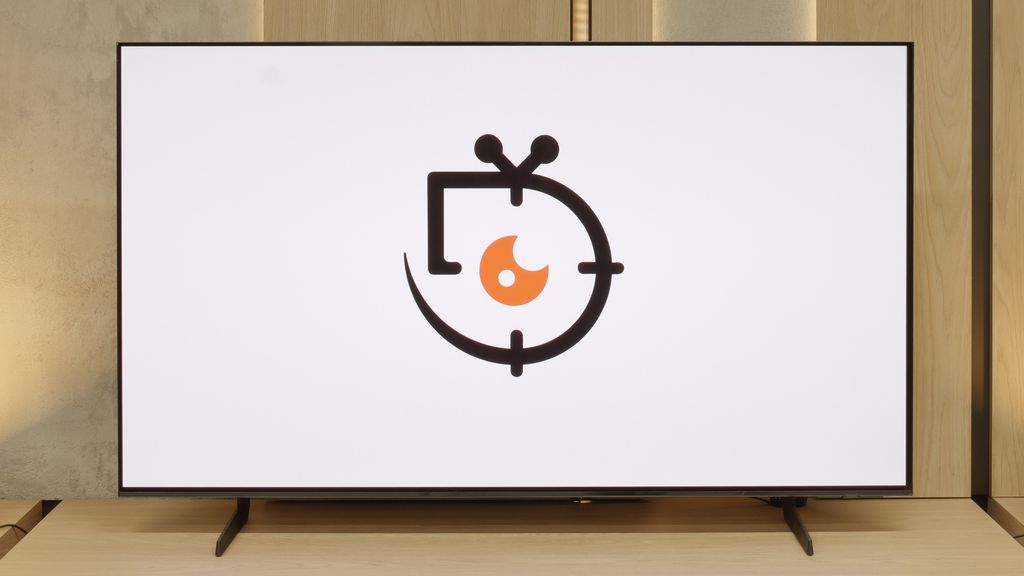
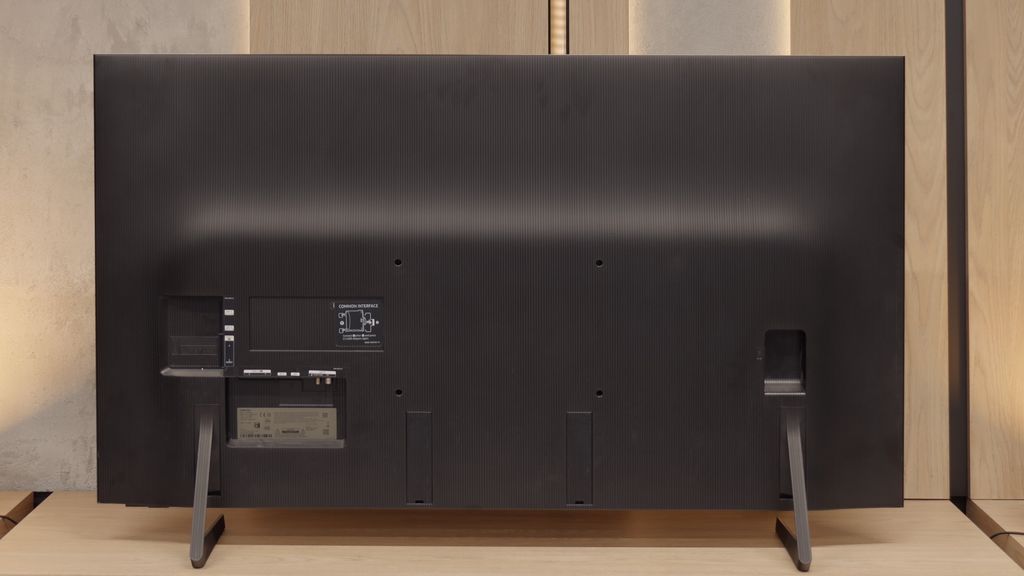
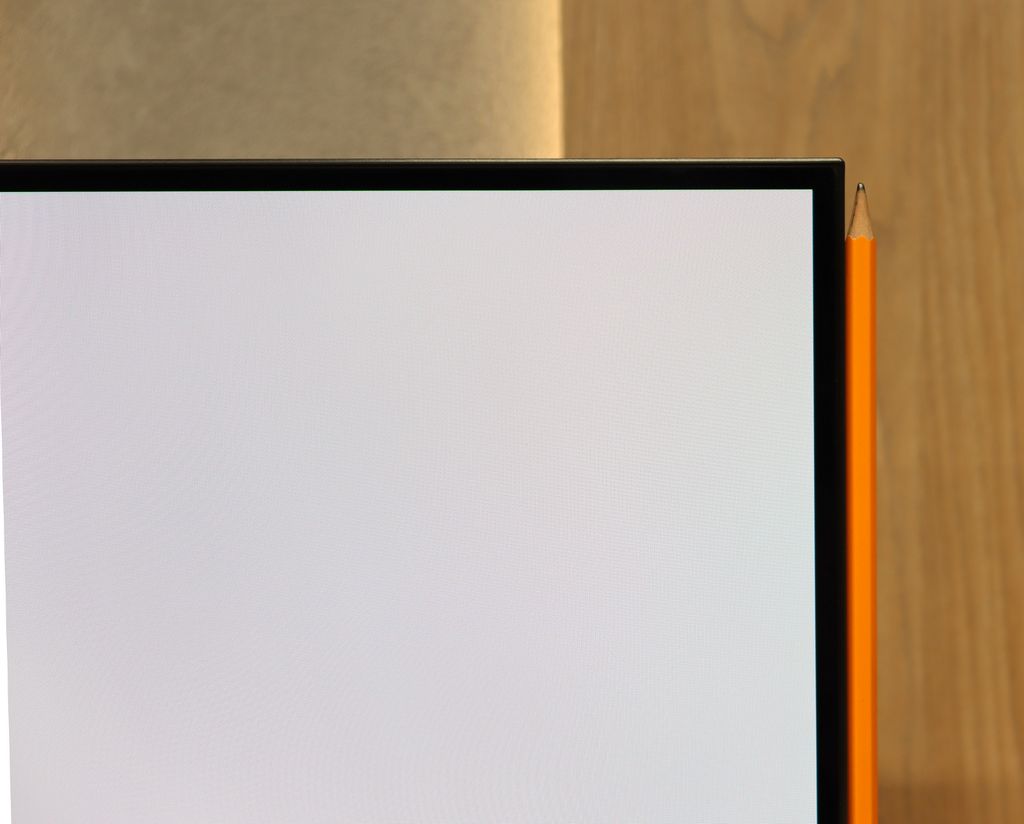
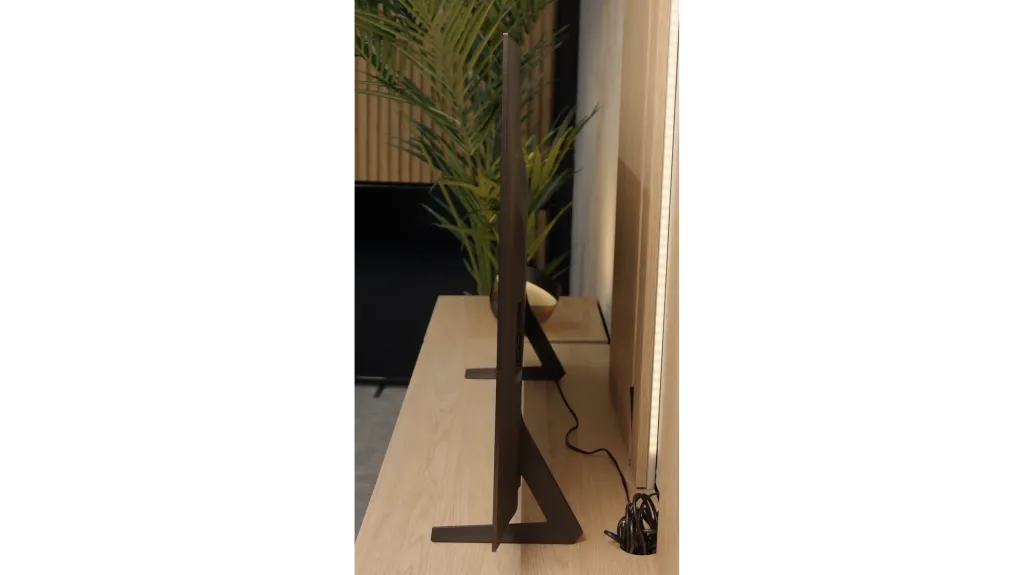
Contrast and black detail
10/10
10/10
Contrast:

Result
∞:1

Result
∞:1

Result
∞:1

Result
∞:1

Result
∞:1

Result
∞:1

Result
∞:1

Result
∞:1

Result
∞:1

Result
∞:1
Halo effect and black detail visibility:

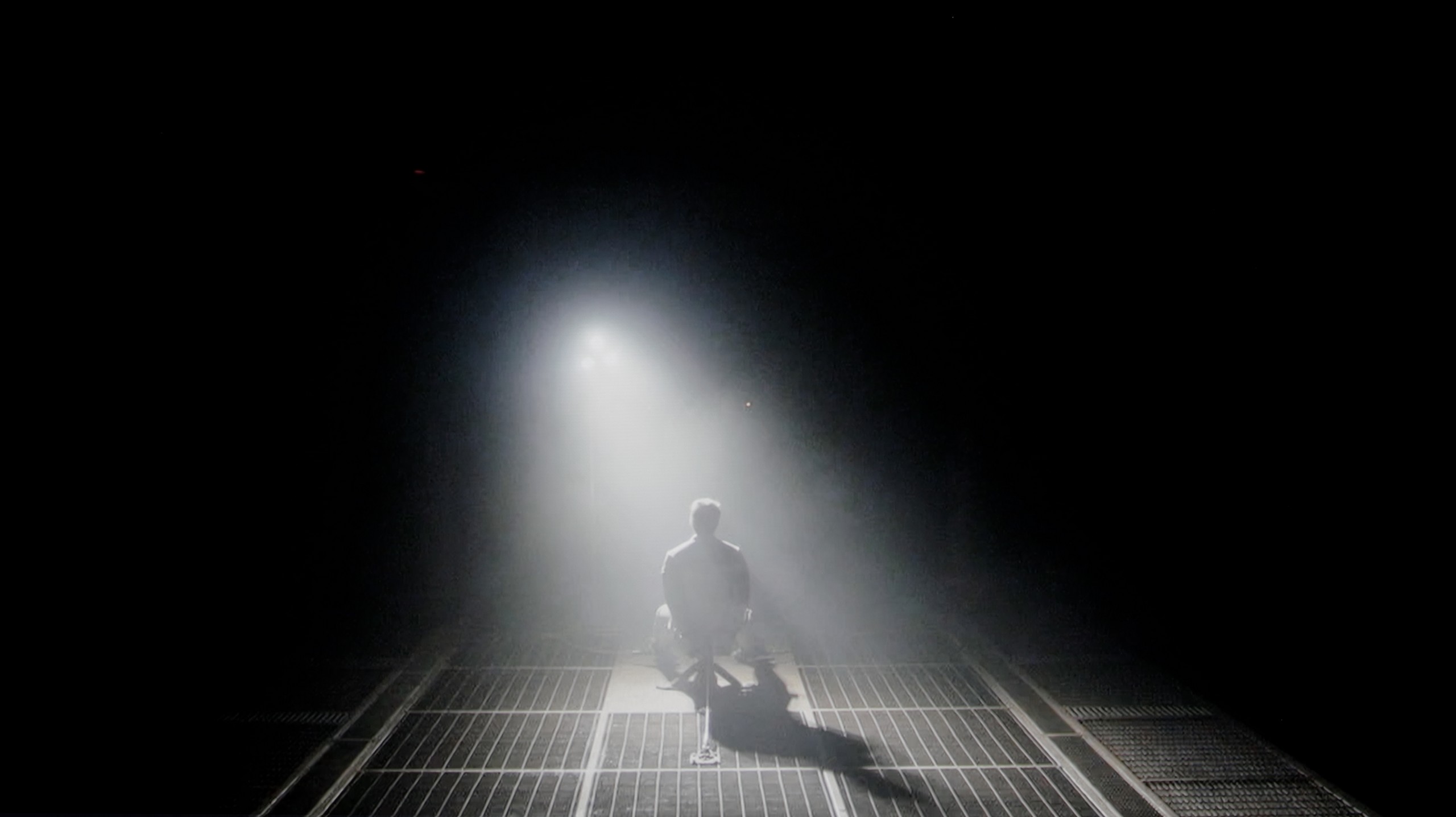
Philips OLED769 amaze with its black and contrast quality. Thanks to OLED technology, each pixel in this television is self-illuminating, allowing for complete shutdown of individual pixels. This means that black areas of the image are perfectly black, and the contrast is infinite. The effect is incredibly realistic, with excellent clarity and detail in dark scenes. The OLED panel used in Philips OLED769 is produced by LG, known as WOLED, ensuring the highest quality in black reproduction. As a result, the television offers contrast that is unattainable for traditional LCD televisions - even the best ones on the market.
Samsung S85F in the 55-inch version has something special – it features a QD-OLED panel. This might sound quite surprising, but that's the fact, at least in Poland. So the question arises: is the difference compared to last year's S85D with a WOLED panel even noticeable? Yes, although in this specific test – black levels and contrast – it practically makes no difference.
Regardless of the scene, the S85F presents infinite contrast and perfect blacks that we expect from any OLED. These results can impress even the most demanding film enthusiasts. It's worth remembering that only TVs with organic panels can provide such deep blacks – and it doesn't matter whether it's WOLED or QD-OLED. So if you dream of a screen that can 'turn off' the light in a scene just as effectively as a boutique cinema in a dark room, the S85F is one of those TVs.
HDR effect quality
6.1/10
6.2/10
Luminance measurements in HDR:

Result
609 nit

Result
707 nit

Result
801 nit

Result
775 nit

Result
261 nit

Result
666 nit

Result
703 nit

Result
742 nit

Result
732 nit

Result
433 nit
Scene from the movie “Pan” (about 2800 nits)


Scene from the movie “Billy Lynn” (about 1100 nits)


Static HDR10


Dynamic: Dolby Vision
Dynamic: HDR10+


HDR luminance chart:
Samsung S85F OLED
HDR luminance
Philips OLED769
HDR luminance
Luminance of RGB colors
Philips OLED769 performs quite well, especially in movie scenes with small light points. The television surprises with its brightness, reaching around 800 nits, which is an impressive result. This means that small light sources, like street lamps at night or stars in the sky, are vivid and full of detail. However, the biggest challenge for this model is the scene with a full-screen sun glare. In such moments, the brightness drops to around 250 nits, which isn’t very impressive. This is a typical issue with cheaper OLED displays, which struggle to maintain high brightness across the entire screen.
As an OLED, the Samsung S85F can shine – literally. In favourable conditions, it can generate brightness exceeding 750 nits. This is significant because most films are created with displays aiming for around 1000 nits. In practice, this means that in scenes with moderately large, bright elements, the picture can look absolutely stunning. However, it's not always so rosy. When an enormous amount of light appears on the screen – whether it's an expansive, bright background or an entire frame filled with white – the S85F must tone it down. Brightness can drop by even four times in such scenes. This limitation is well-known to anyone familiar with OLEDs in this price segment, so we don't view it as a particular fail. However, something that deserves praise is what sets this model apart from the competition – colour gamut coverage. Thanks to the QD-OLED panel, our colour meter indicated values exceeding 100% coverage of DCI-P3 and an impressive 86% for the ultra-wide BT.2020 palette. Such results are hard to find even in televisions that cost several times more.
Factory color reproduction
6.4/10
5.5/10


Factory Mode
After calibration


Factory Mode
After calibration
The "Film" mode turned out to be the best factory setting in terms of fidelity to the original material, and it was on this setting that we based our tests. However, like other factory modes, it was not without its flaws. Let’s take a closer look at what exactly went wrong in the SDR and HDR materials.
In both cases, the white balance was disturbed by excessive dominance of green and red colours. This phenomenon created a yellowish tint that spilled over the entire image, leading to issues such as yellowed whites and unnatural skin tones. These problems were clearly highlighted on the "ColourChecker" palette, where each of the samples was shifted towards warmer shades.
As for contrast and brightness, in the Philips OLED769, we can look at two key graphs: Gamma for HD content and the EOTF curve for 4K HDR content. In the case of the first graph, the gamma value is below the optimal level of 2.4, resulting in the bright parts of the image being lightened. This means that bright elements may be somewhat overexposed, losing detail and depth. Meanwhile, the EOTF curve for 4K HDR content performs really well. The graph shows that the television effectively reproduces details in both the brightest and darkest parts of the image, translating to a realistic and dynamic representation of scenes.
Samsung, as befits a manufacturer with ambitions, has equipped the S85F with a mode called Filmmaker. Its task is simple: to make the colours on the newly purchased television as faithful as possible to what the director intended to show us. Sounds great… but, as is often the case, a theory that sounds wonderful doesn’t always translate into perfect practice.
In the tested unit, it quickly became apparent that the image – due to an excess of blue and red – looked as if someone had gone a bit overboard with the saturation. As a result, there were quite significant colour errors, particularly in 4K content. On top of that, there was an issue with brightness – the S85F could brighten most scenes more than it should, stripping them of the intended mood.
Fortunately, Samsung televisions, including the S85F, offer an impressive number of settings for advanced calibrators. This means that we could see what this panel is really capable of when it gets into the right hands.
Color reproduction after calibration
8.8/10
9.3/10




After professional calibration, Philips OLED769 truly shines in terms of colour accuracy. The television has been completely rid of any yellow tint in both HD and 4K content. The Colour Checker test confirms that deltaE errors are minimal, occasionally exceeding 2, which means we can talk about almost perfect renderings of the director's vision.
When it comes to contrast, the situation is equally impressive. For 4K materials, there wasn't much to improve from the start, while the gamma graph has been significantly enhanced. As a result, dark and bright parts of the image are represented with greater accuracy, leading to realistic and dynamic scene reproduction.
The calibration has unlocked the full potential of this television, both in terms of colour and contrast. Philips OLED769 now offers vivid, natural images of high quality that will delight any user, whether they're watching movies or using other multimedia.
Thanks to the huge number of settings in the menu, we managed to bring the S85F almost to perfection. White balance in SDR content? Literally perfect – deviations do not exceed a value of "1". So we can confidently say that in materials with not too high dynamics, we have an image that's close to reference.
In HDR content, minor issues appeared, but they don't have much significance in practice – most errors fall below the threshold of perception, which is a value of "3". We also managed to tame the S85F when it comes to brightness management – the EOTF curve, even in films, holds nearly perfect straight line. This is one of those cases where after calibration, you can comfortably forget about the settings and simply watch movies and series at the highest level.
Smoothness of tonal transitions
5.9/10
7.9/10












The gradation in Philips OLED769 unfortunately proves problematic in almost every scene from the test sequence. Particular difficulties arise in dark colours and around blacks. In these areas, in addition to the posterization effect, the image is accompanied by a solid amount of noise. The problem with tonal transitions is not limited to dark hues – it can also be seen in lighter elements, such as in a scene from the movie "Kingsman", where clear colour banding is visible around the sun. This phenomenon can significantly affect the visual experience, especially in scenes where black and dark shades play a crucial role. It's hard not to notice these imperfections, which can disrupt the viewing experience, particularly for viewers who value excellent image quality.
Thanks to the QD-OLED panel, colour blending on the S85F is really very good. It's particularly worth noting how it performs in the darkest, most demanding scenes – where most TVs start to struggle, this model operates almost perfectly.
Interestingly, a slight stumble can be noticed in those easier, brighter shots. There is minimal colour banding, but it's so subtle that it's hard to believe it would genuinely bother anyone during viewing.
Image scaling and smoothness of tonal transitions
7.2/10
7/10
Smooth transition function

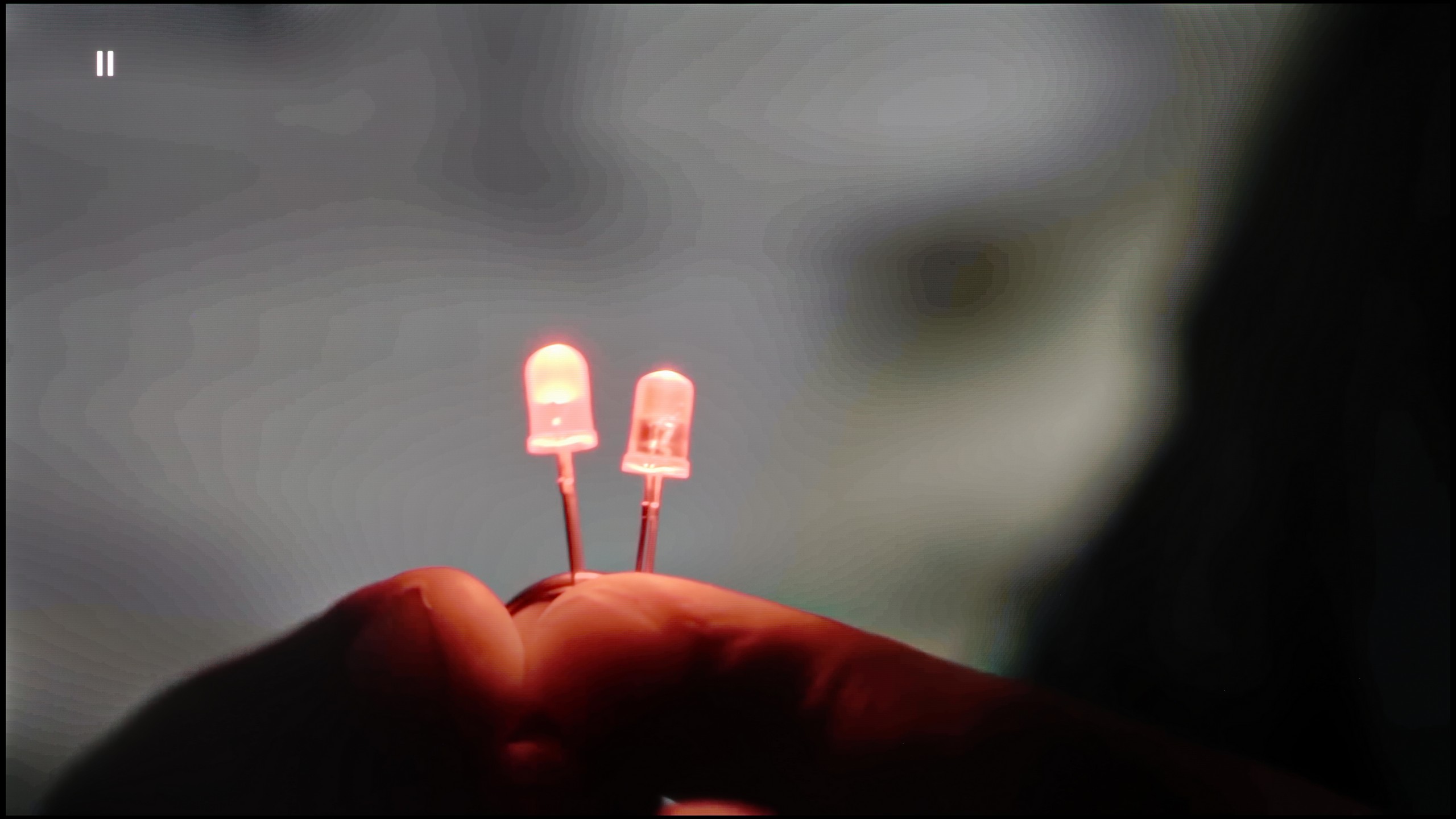
Image without overscan on the SD signal


When it comes to lower quality materials, the distortion reduction in the Philips OLED769 does well at smoothing tonal transitions, especially at the minimum setting. It's worth noting that at this setting, film grain isn't blurred, which is a pleasant surprise, as such negative phenomena often occur with other manufacturers. Overall, it's quite a decent solution. However, it should be noted that this setting doesn't work in HDR mode, where gradation issues are much more pronounced. In HDR mode, the television struggles with smoothing tonal transitions and may present more noticeable distortions and noise, reducing image quality in dynamic scenes.
As for digital processing, the Philips OLED769 performs well. The model in the picture isn’t overly jagged, and the branches in the background lack the characteristic artifacts. The television achieves this effect by avoiding artificial sharpening, which may be an advantage for some users. However, others may find this less appealing, as they prefer a more vivid, sharper image rather than a subtle effect. This effect can be mitigated by using a higher setting for the "Sharpness" parameter.
The tone transition smoothing function in the S85F works really effectively – it can completely eliminate the problem of visible banding in very poor quality material, such as from YouTube. Unfortunately, even the lowest level of this option comes with compromises. The noise reduction is so aggressive that it can smooth out film grain, which many of us consider to be an element of the cinematic atmosphere. At the “Standard” level, we didn’t notice this function removing anything significant from the image, so we can recommend this setting. On the other hand, the “High” level is a different story – it can smooth out not just noise, but also small, desirable details like, for example, the texture of objects.
When it comes to image scaling, the S85F performs very well. The material looks sharp, and the only slight imperfection is the barely noticeable aliasing of edges. And there’s the ongoing issue with Samsung televisions – overscan. This can cause some scenes to be slightly cropped, which is worth noting when watching very old content.
Blur and motion smoothness
8.3/10
8.5/10

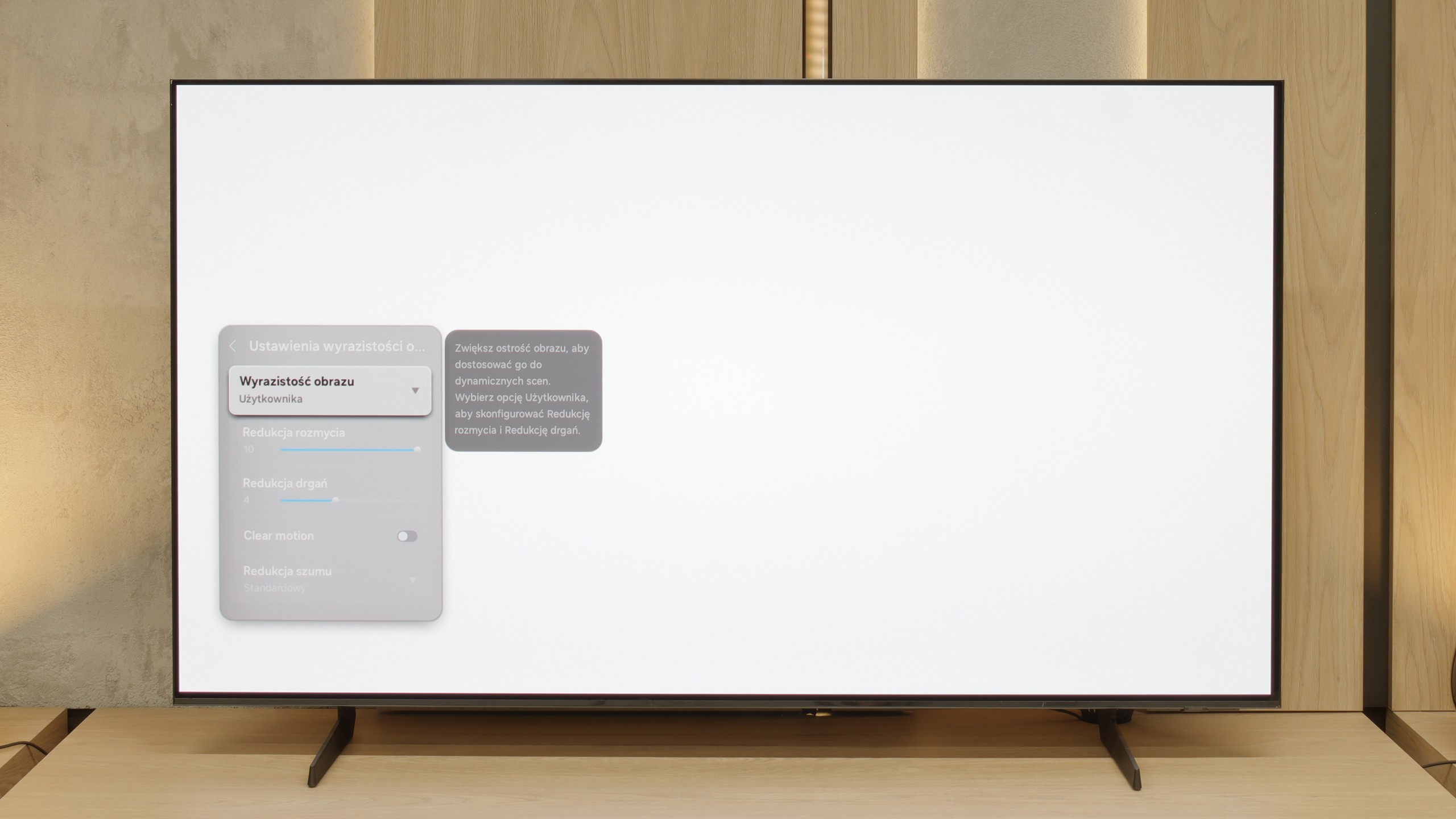
Blur (native resolution, maximum refresh rate):






Blur (BFI function enabled):
Image flickers in this mode



Smużenie ():
Smużenie (4K@60Hz Game Motion Plus):



Philips OLED769 features a multi-level motion smoother called "Motion Style," which will please users who value the ability to adjust motion fluidity in films. With this function, the image can be set to appear more stuttery or fluid, reminiscent of a theatrical effect. It's a great solution for those who want to tailor the displayed content to their visual preferences. Gamers will also not be disappointed, as the television, like most OLEDs, is equipped with a 120Hz panel. This ensures extraordinary fluidity and dynamic imagery. Unfortunately, Philips OLED769 does not have the BFI (Black Frame Insertion) feature, which could further enhance the smoothness and clarity of motion. Despite this limitation, the television still offers excellent visual experiences for both cinema lovers and gamers. This is definitely one of its strong points.
S85F is an incredibly fast television – and that’s not just empty hype. Thanks to the 120 Hz OLED panel, dynamic scenes, whether in games or while watching a live match, look just as they should – smooth, sharp, and without the feeling that something is "slipping" out of frame. The lightning-fast pixel response time, typical of OLEDs, plays a big role here. Transitions between frames are virtually instantaneous, and the image remains clear even during the fastest camera movements. A ball flying across half the field? A car speeding in a chase scene? Everything here is clear and free of the typical "trail" associated with LCDs.
This is exactly what we expect from a good OLED – zero compromises when it comes to motion smoothness. The S85F gives the impression that regardless of the pace of action, we can focus on what’s happening on the screen, rather than on the imperfections of the image.
Console compatibility and gaming features
10/10
8.2/10
- ALLM
- VRR
- VRR range40 - 120Hz48 - 120Hz
- Dolby Vision Game Mode
- Correct implementation of HGIG
- 1080p@120Hz
- 1440p@120Hz
- 4K@120Hz
- Game bar

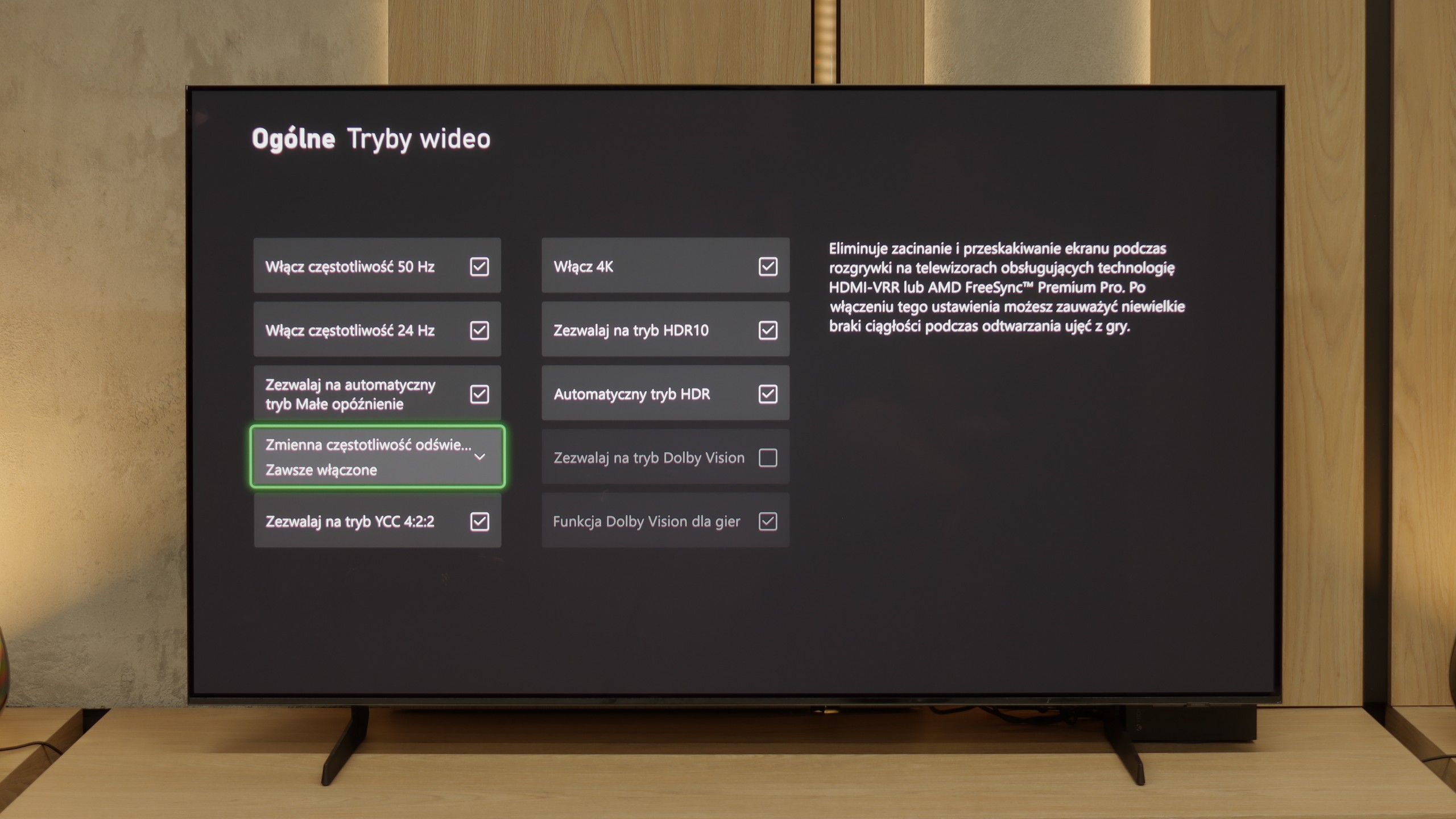

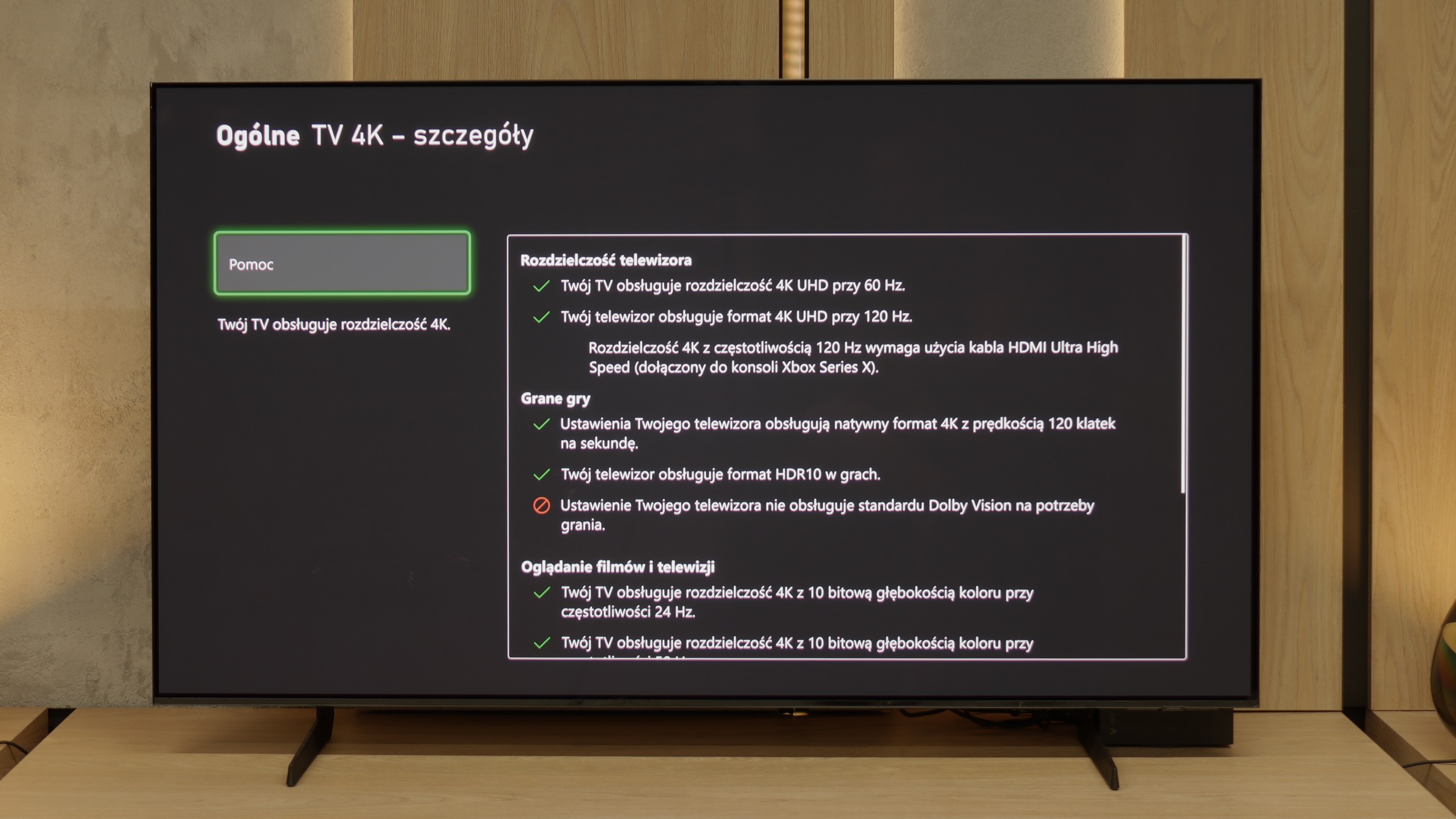

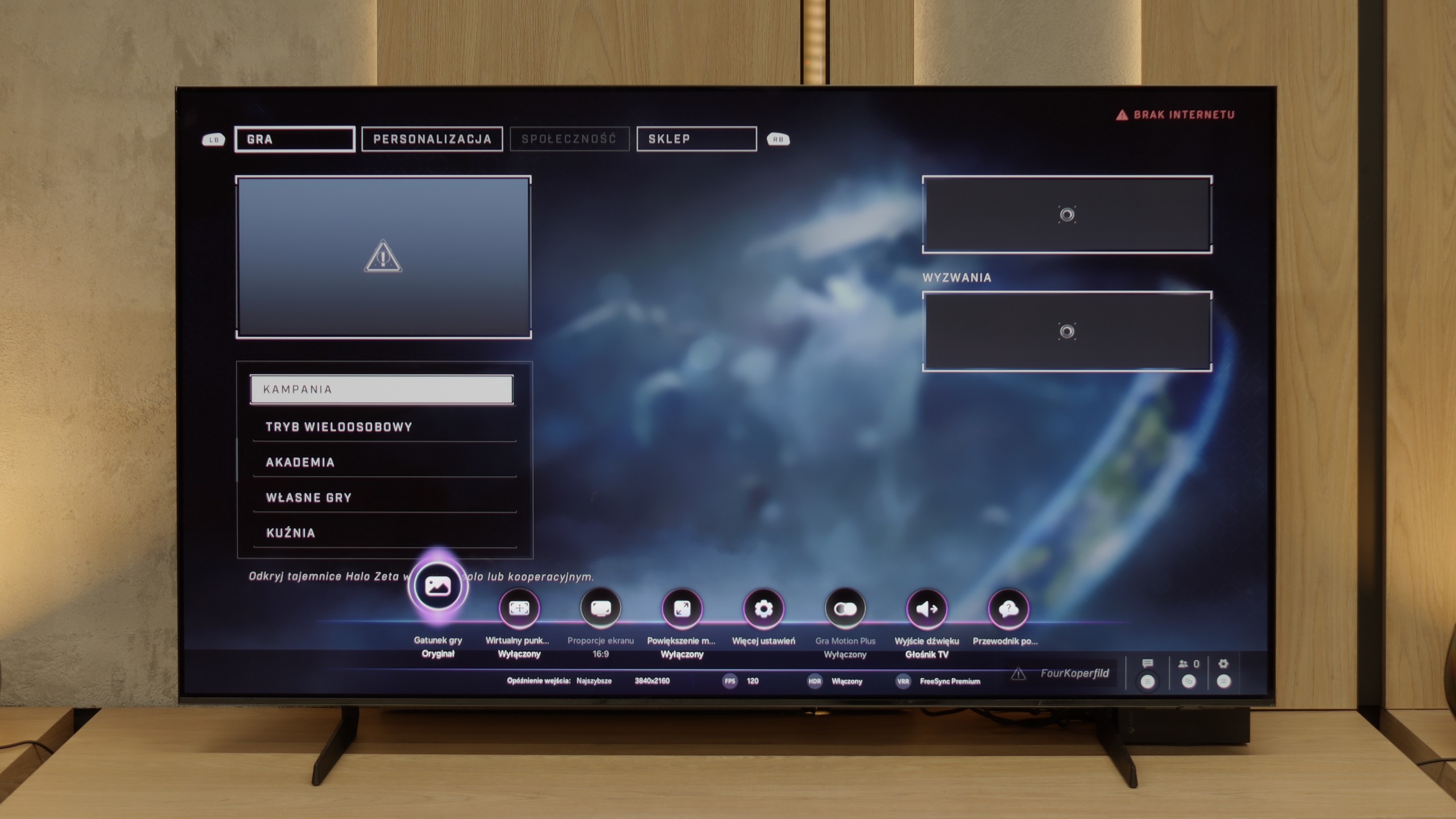

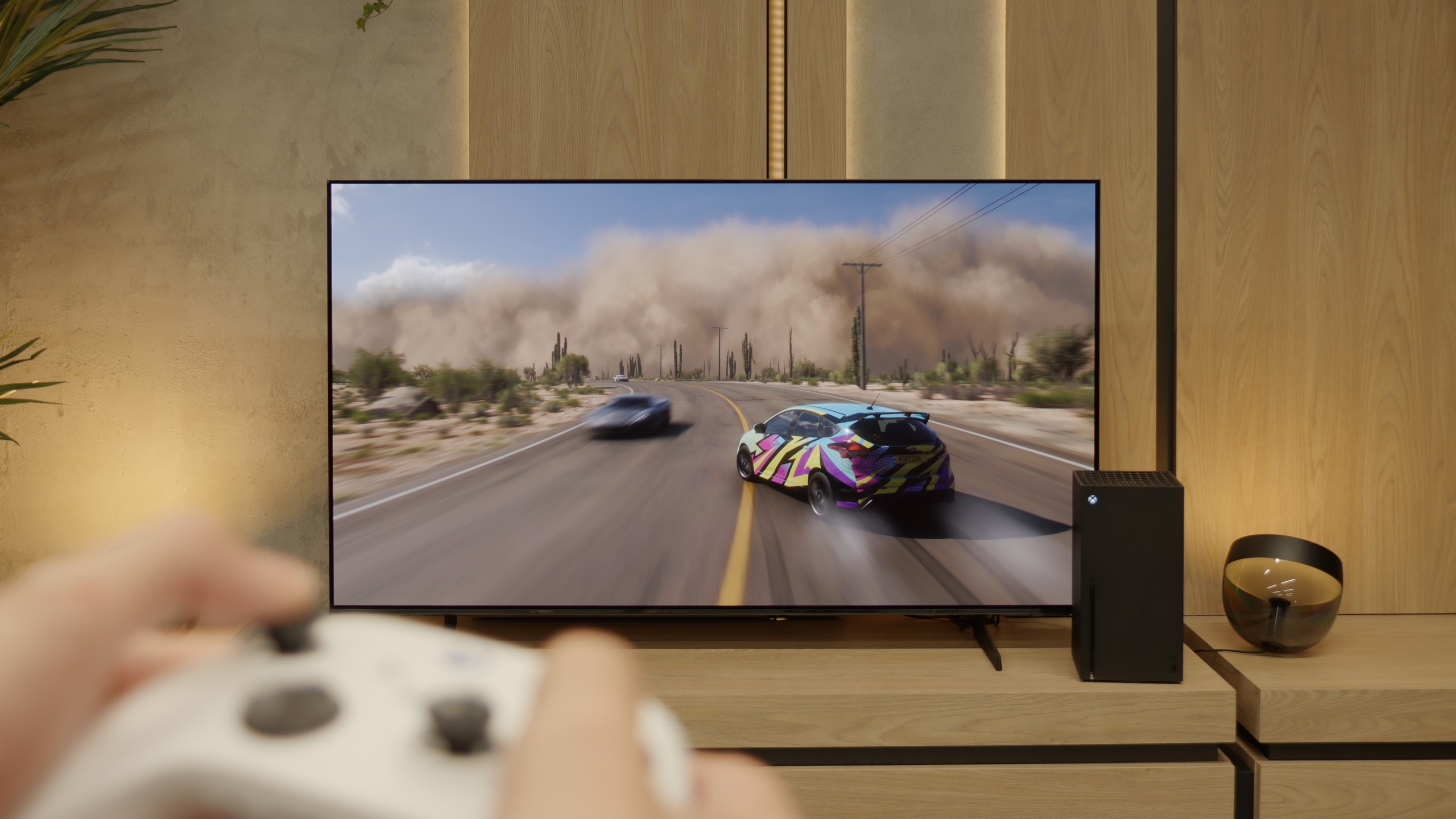
Philips OLED769 has been designed with gamers in mind, offering full compatibility with consoles and the highest quality gameplay. The television received the maximum rating in this category, providing everything your heart desires. With HDMI 2.1 ports fully supporting ALLM (Auto Low Latency Mode) and VRR (Variable Refresh Rate), the TV ensures smooth and hassle-free gaming. ALLM automatically switches the television to low latency mode, and VRR eliminates stuttering and screen tearing, resulting in smoothness and stability in gameplay. The Dolby Vision feature for gamers is another advantage, although it only works at 60 Hz. Most casual gamers will probably not feel the lack of a higher refresh rate, however, more demanding users may have some reservations. It allows for enjoying a dynamic range of tones and realistic images, enhancing the gaming experience. PC gamers will also not be disappointed, as the Philips OLED769 offers full compatibility with Nvidia graphics cards, thanks to support for G-Sync. This technology synchronizes the TV's refresh rate with the graphics card, eliminating tearing and stuttering, leading to excellent image smoothness.
Philips OLED769 is a television that perfectly meets the needs of gamers, offering a wide range of advanced features and technologies that significantly enhance game quality and user comfort.
S85F has practically everything on board to become the dream screen for gaming. Four full HDMI 2.1 ports with a bandwidth of 48 Gb/s, support for VRR, ALLM, a super-detailed Game Bar that clearly shows all parameters – plus a gem in the form of Game Motion Plus. This motion smoother makes animation in games more enjoyable, while input lag increases slightly. It's a rare combination, and that’s a big plus for Samsung.
Perhaps Samsung will fix this in the next update – and we have high hopes for that. Because if HGiG comes back, the S85F will become nearly the perfect TV for gamers.
Input lag
9.8/10
10/10
SDR
HDR
Dolby Vision
The input lag of the Philips OLED769 is impressively low. At a refresh rate of 120Hz, values hovering around 5 ms are truly impressive, and at 60Hz, 13 ms is also an excellent result. Such low latencies provide a quick response to player movements, which is crucial for smooth and responsive gameplay. The only downside is the lack of support for Dolby Vision with content/games at a 120Hz refresh rate. Nevertheless, the TV still offers incredible visual experiences and excellent specifications that will satisfy any gamer.
Here, dear gamers, the S85F shows its claws. 5 ms with 120 Hz content and around 10 ms with 60 Hz are results that can be described in one word in the world of televisions – phenomenal. This means that the response to our movements is practically instantaneous. We press the button, and the action on the screen happens without any delay, as if the television can read our thoughts. In dynamic games, where a fraction of a second can decide victory or defeat, such values make a huge difference. There's no question of a nervous "wait" for the image to catch up with our movements. The S85F gives us the feeling that everything is under our complete control – and that's how it should be in equipment that aspires to be the ideal screen for a gamer.
Compatibility with PC
7.6/10
7.6/10

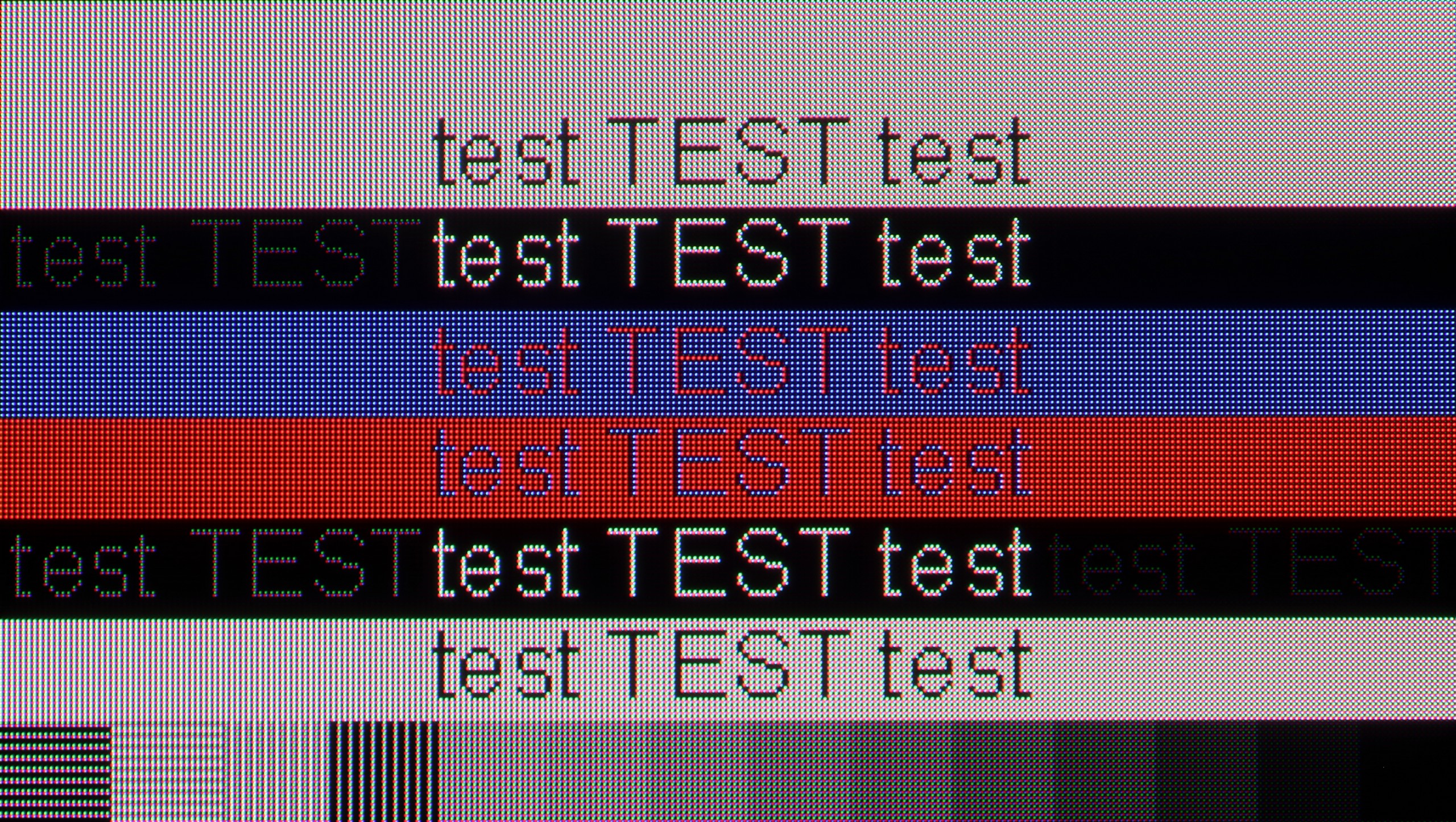
OLED769 works perfectly with PC computers. The rating in this category is very good, mainly due to the excellent readability of fonts, regardless of the background colour. The support for chroma 4:4:4 further enhances the image quality, providing clear and sharp details. The low response time is another advantage of this model, translating into smoothness and responsiveness during work and gaming. All of this makes the Philips OLED769 an ideal choice for PC users looking for a large screen with high image quality and excellent parameters.
If you're planning to connect the S85F to a computer, we have good news – this television is perfect for that. Low input lag and a 120 Hz panel make gaming on PC a pure pleasure. Whether we're talking about dynamic shooters or more relaxed RPGs, the response is instantaneous, and the smoothness of the animation can draw you in for hours on end.
Of course, there’s no rose without thorns. Due to the diamond pixel layout in the QD-OLED panel, there is a slight "rainbow icon" effect, particularly noticeable when sitting close to the screen. Fortunately, this is more of a detail that most of you won’t mind in everyday use. Especially since, thanks to the proper implementation of 4:4:4 chroma, the readability of fonts is at a very good level – documents, websites, and text editors simply look as they should.
Viewing angles
7.5/10
9.8/10
When it comes to viewing angles, Philips OLED769 performs exceptionally well, as is the case with all OLED TVs. The picture remains sharp and does not lose quality, regardless of the viewing angle. This means you can enjoy excellent picture quality, even when watching from the side or from more unconventional spots in the room. The only TVs that offer even better viewing angles are those equipped with QD-OLED and OLED MLA panels. These technologies can provide even greater stability and clarity of the image at various angles. However, compared to standard LCD TVs, Philips OLED769 still offers significantly better viewing angles, making it a great choice for large rooms and family movie nights.
Here, dear readers, the S85F reaches the absolute peak. The viewing angles are phenomenal – some of the best you can get in a TV today, and it’s thanks to the unique QD-OLED panel from Samsung Display. Of course, WOLED panels can also maintain a high level in this regard, but let’s not kid ourselves – what the QD-OLED shows in the S85F is even more impressive. Colours, contrast, and brightness remain practically unchanged even when viewing the screen from a very large angle. It’s the kind of television where you don’t have to fight for the “best spot on the couch” – everyone will see the picture in all its glory, no matter where they’re sitting.
TV efficiency during daytime
4.6/10
5.1/10

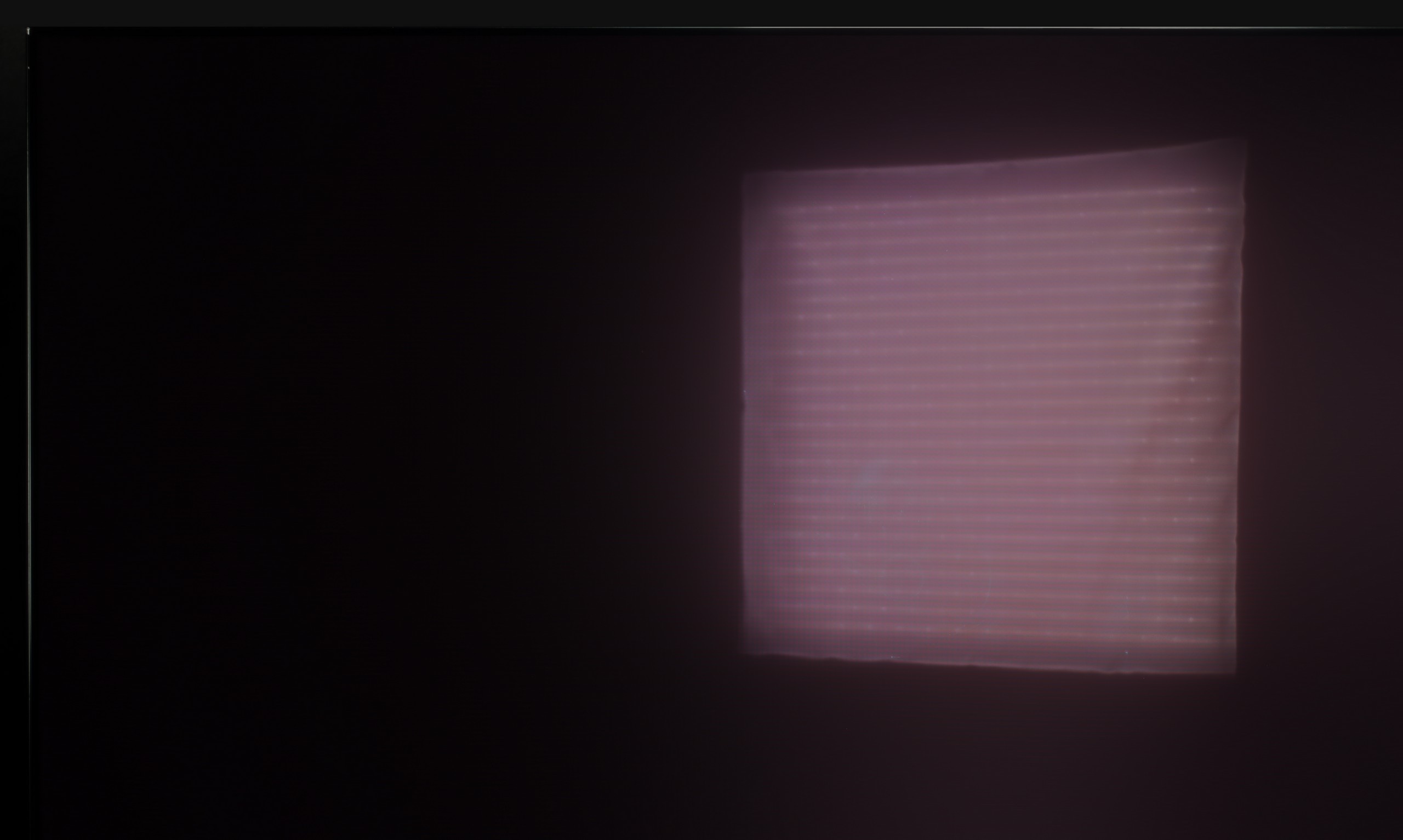


Matrix brightness
Average luminance SDR
Samsung S85F OLED: 317 cd/m2
Philips OLED769: 258 cd/m2
The performance of the Philips OLED769 TV during the day leaves a bit to be desired. The panel, despite being satin, reasonably suppresses reflections, which can be noticeable in bright rooms. The low rating is primarily due to the fairly mediocre brightness of the TV—250 nits is unimpressive and may not be sufficient to provide adequate image quality in strong daylight. This means watching on sunny days can be less comfortable, and image details may be harder to see.
We really liked the saying "no rose without thorns," and it fits perfectly with QD-OLED TVs. Especially when we look at their performance in highly lit conditions. As you may notice, under very intense light, the surface of the panel can take on a slightly cherry hue. The effect is subtle in the case of the S85F, but in extreme lighting conditions, black can appear a bit worse than in WOLED panels. But – and this "but" is key here – QD-OLED suppresses direct light reflections much better. This means that reflections will be less bothersome, and the picture will retain clarity even when something bright reflects on the screen. You win some, you lose some.
As for brightness, the S85F is a moderately bright OLED. It’s not a model designed for extremely sunny living rooms. If you plan to place it in a very bright room, we recommend considering blinds or placing it in a location that at least partially protects it from direct light.
Details about the matrix
Subpixel Structure:

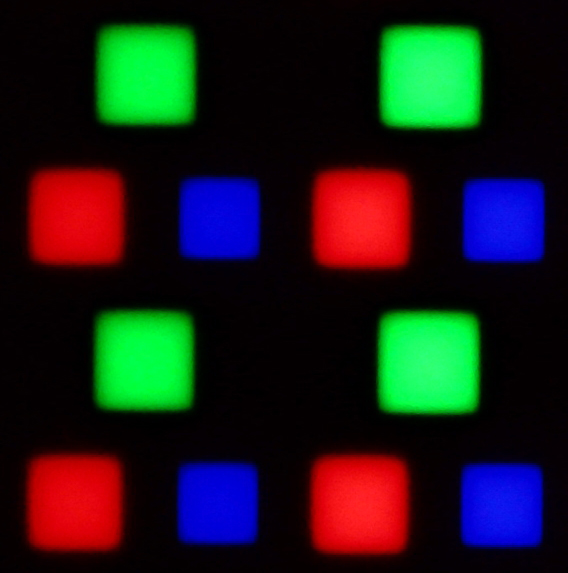
Panel uniformity and thermal imaging:


Philips OLED769
Samsung S85F OLED
TV features
5.7/10
7.3/10
- HDMI inputs0 x HDMI 2.0, 4 x HDMI 2.1 48Gbps0 x HDMI 2.0, 4 x HDMI 2.1 48Gbps
- Other inputsToslink (Optical audio)
- OutputsToslink (Optical audio), eARC (HDMI), ARC (HDMI), Mini-Jack (Headphones)Toslink (Optical audio), eARC (HDMI), ARC (HDMI)
- Network InterfacesWi-Fi 2.4GHz, Wi-Fi 5GHz, Ethernet (LAN) 100MbpsWi-Fi 2.4GHz, Wi-Fi 5GHz, Ethernet (LAN) 100Mbps
- TV receptionDVB-T, DVB-T2, DVB-S, DVB-S2, DVB-CDVB-T, DVB-T2, DVB-S, DVB-S2, DVB-C
Classic features:
- Recording to USB (terrestrial TV)
- Recording programming
- Picture in Picture (PiP)
- RF remote control (no need to aim at the screen)
- Backlit remote control
- Teletext
- Audio only mode
- Bluetooth headphones support
- Simultaneous Bluetooth headphones & TV audio
Smart features:
- AirPlay
- Screen mirroring (Windows Miracast)
- Voice search
- Voice search in native language
- Ability to connect a keyboard and mouse

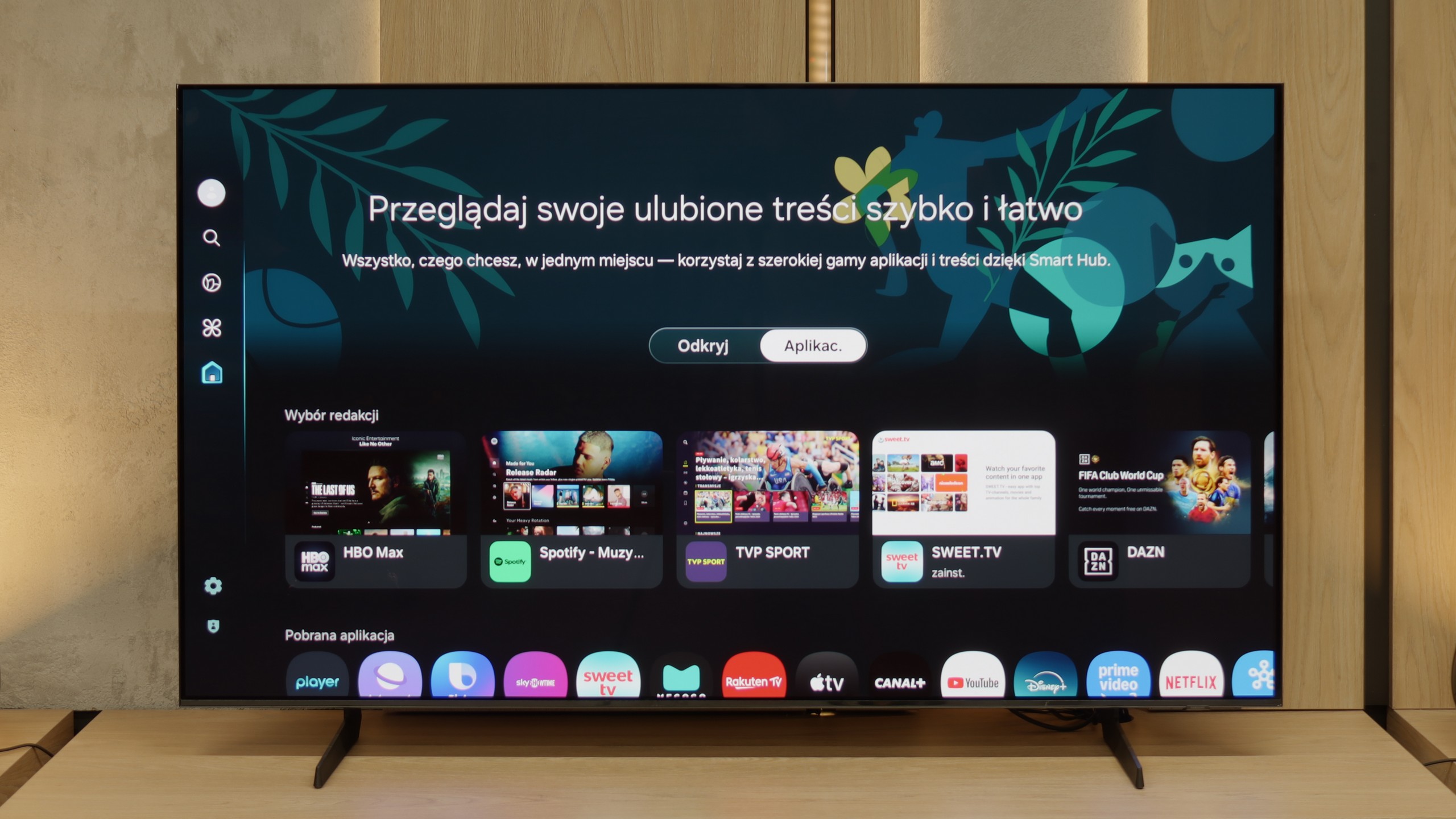
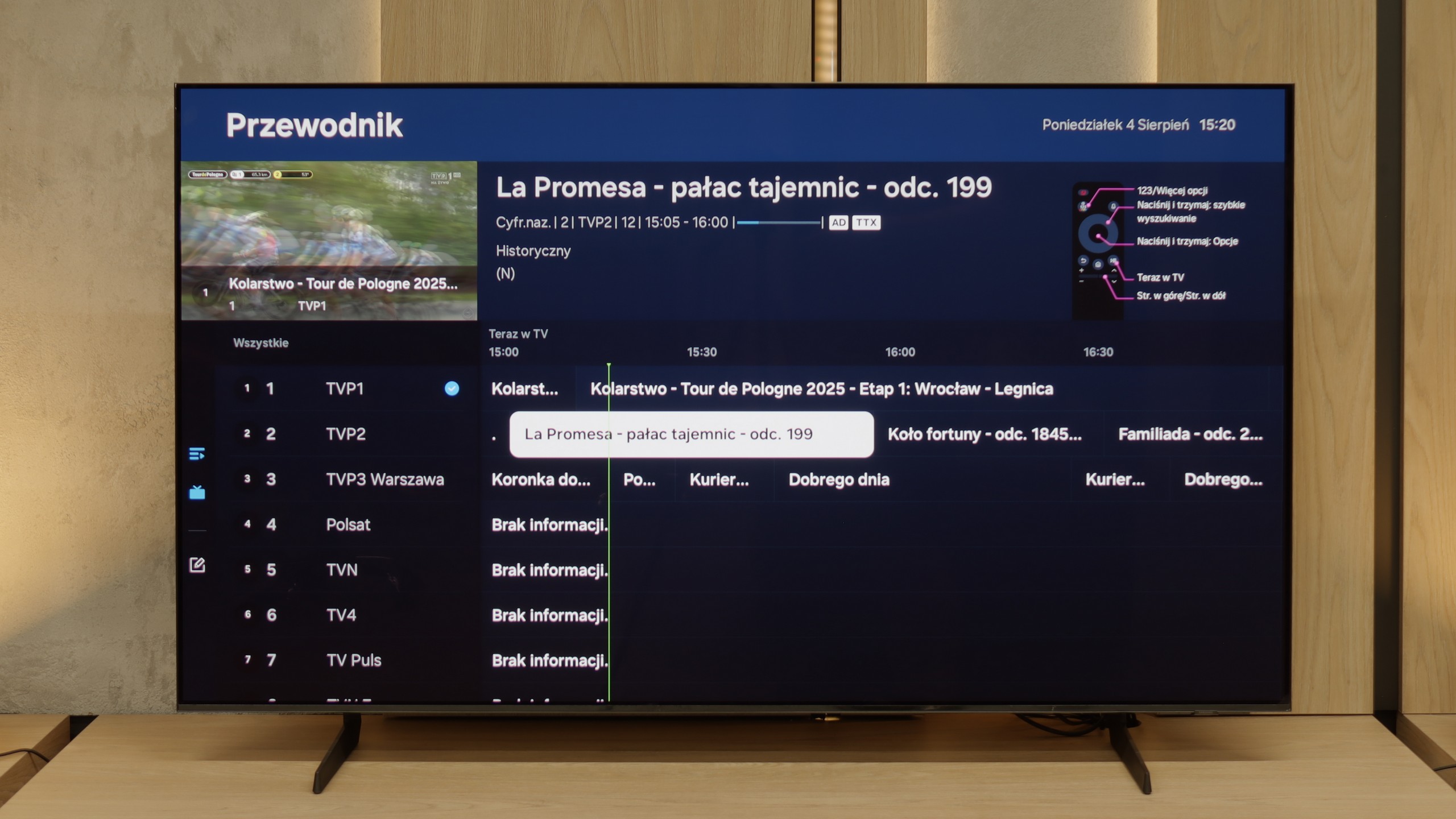
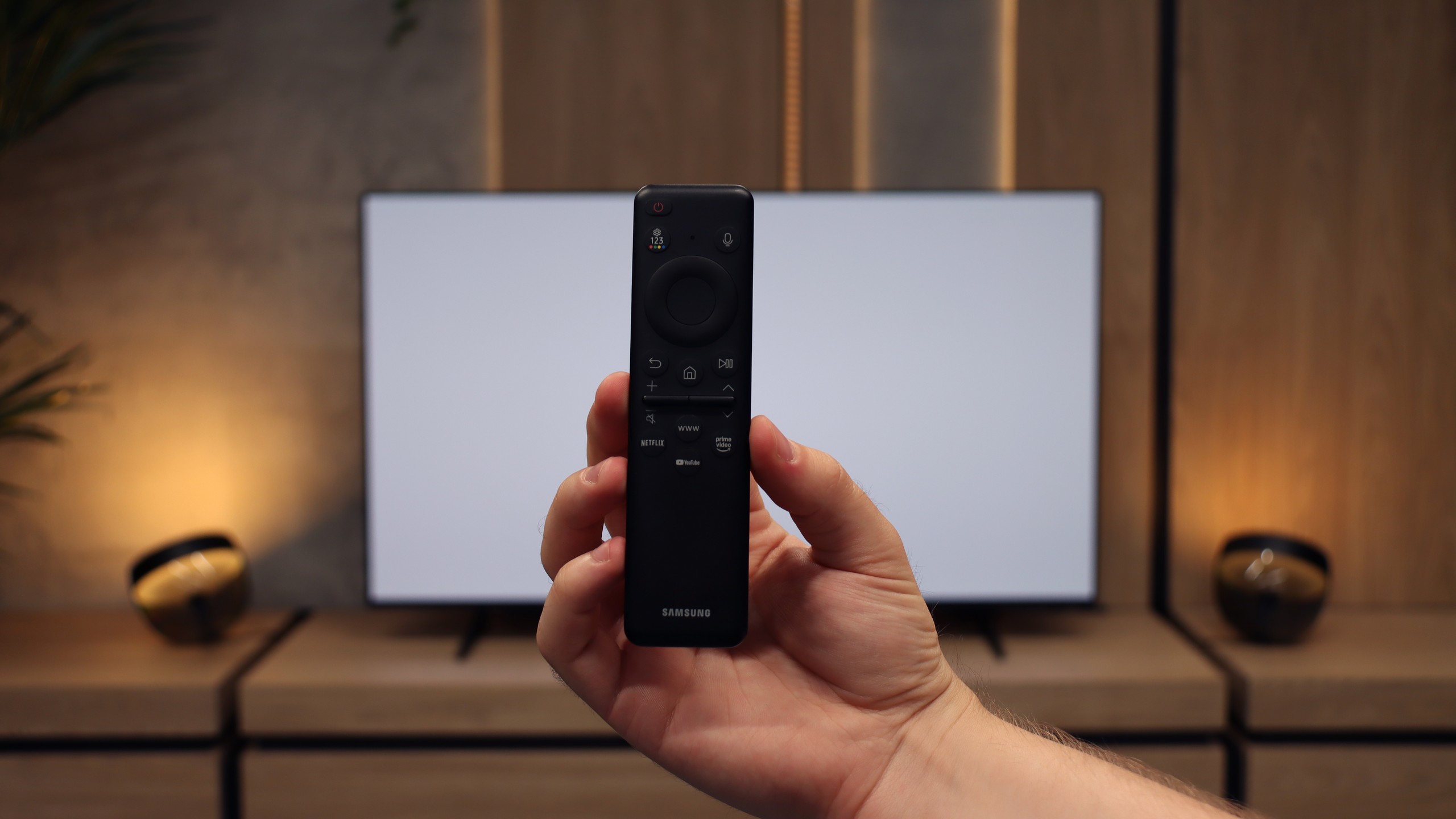
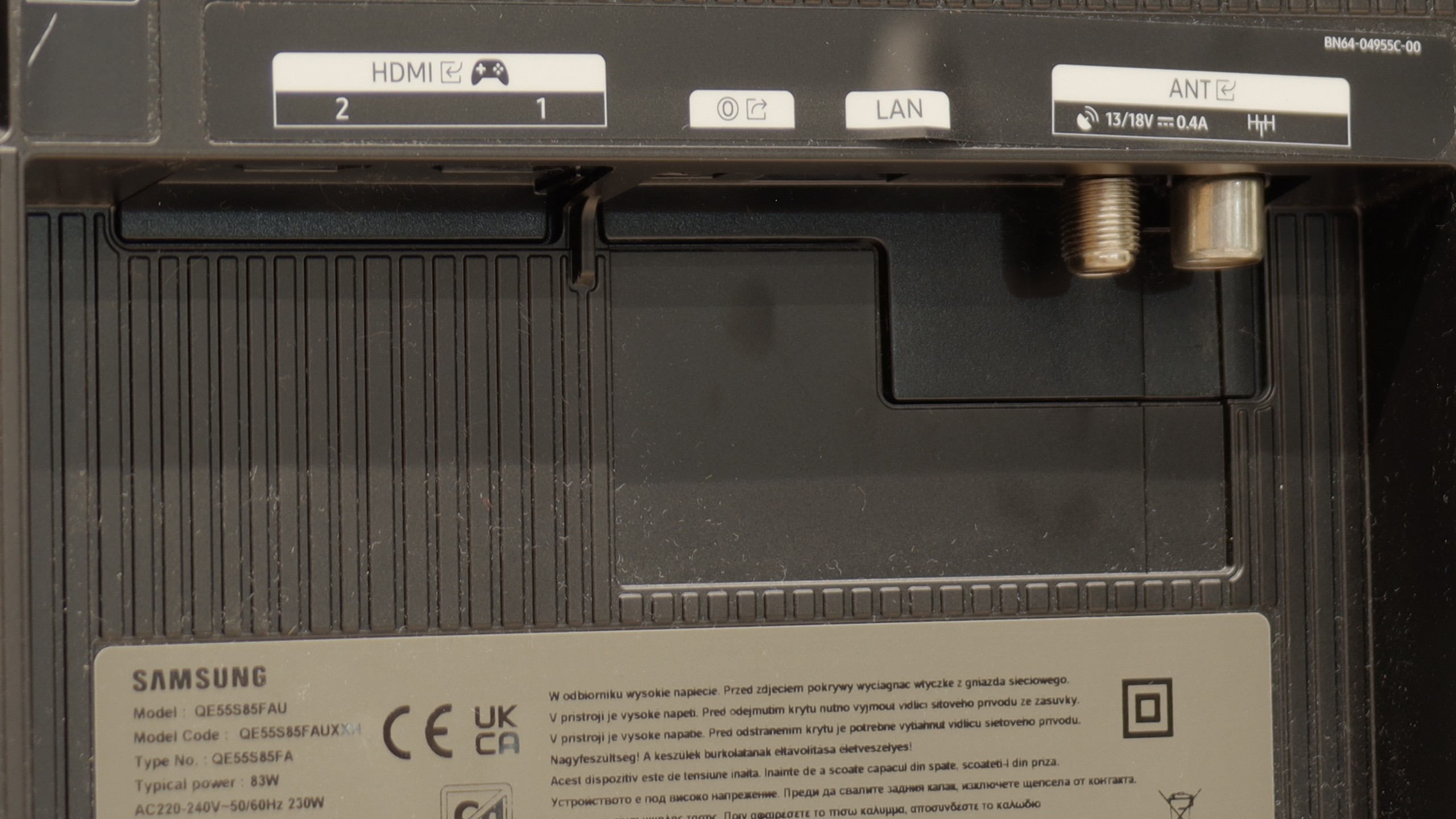
The biggest advantage of the Philips OLED769 television is undoubtedly the three-sided Ambilight system. This technology really makes a difference by extending the screen onto the walls around the TV and creating the illusion of a larger screen. It not only enhances the visual experience but also adds a unique atmosphere, whether we are watching a movie, playing games, or using other multimedia.
Interestingly, there is a new remote included with TVs featuring the TitanOS system. Thanks to its backlighting, it is very convenient to use; however, its wireless nature leaves something to be desired. The hybrid design means that sometimes you have to aim at the TV screen, while other times you don’t – depending on the button being used, which can be a bit annoying.
In the context of the operating system, Philips has introduced a new strategy for this year, replacing the previous open GoogleTV system with its own proprietary TitanOS. As with new technologies, TitanOS has its teething problems. It currently offers only a few basic applications, and the app store doesn't impress with its variety. This may disappoint some users who expect a wide range of available applications. Furthermore, the lack of support for AirPlay and the ability to record to USB are additional limitations that may be problematic.
Features of the classic S85F television
The S85F was not really designed with fans of classic television in mind. We won’t find a PiP function here (which is somewhat surprising, as Samsung typically offers it) or the ability to record programs onto USB from the built-in tuners. Fortunately, the basics are there – teletext and a clear channel guide – so it’s more than sufficient for regular, everyday viewing. The included remote, although simple at first glance and lacking a numeric keypad, allows for control of multiple devices. This means that when connecting, for example, a Canal+ decoder, you don’t need two remotes on the table – the one for the television is quite enough.
SmartTV S85F: Tizen
The smart part is a completely different story. Tizen is one of the most comprehensive operating systems in televisions. It operates smoothly, supports all popular internet functions – from screen mirroring to AirPlay to voice search. The strongest point of Tizen is its integration with the SmartThings app, which can act as a control centre for the entire home. Of course, like any closed system, Tizen has its limitations – for instance, a smaller app library compared to GoogleTV. However, looking at the current list of available applications, it’s hard to point out anything that might actually be missing.
Playing files from USB
8.2/10
9.1/10
Supported photo formats:
Maximum photo resolution:

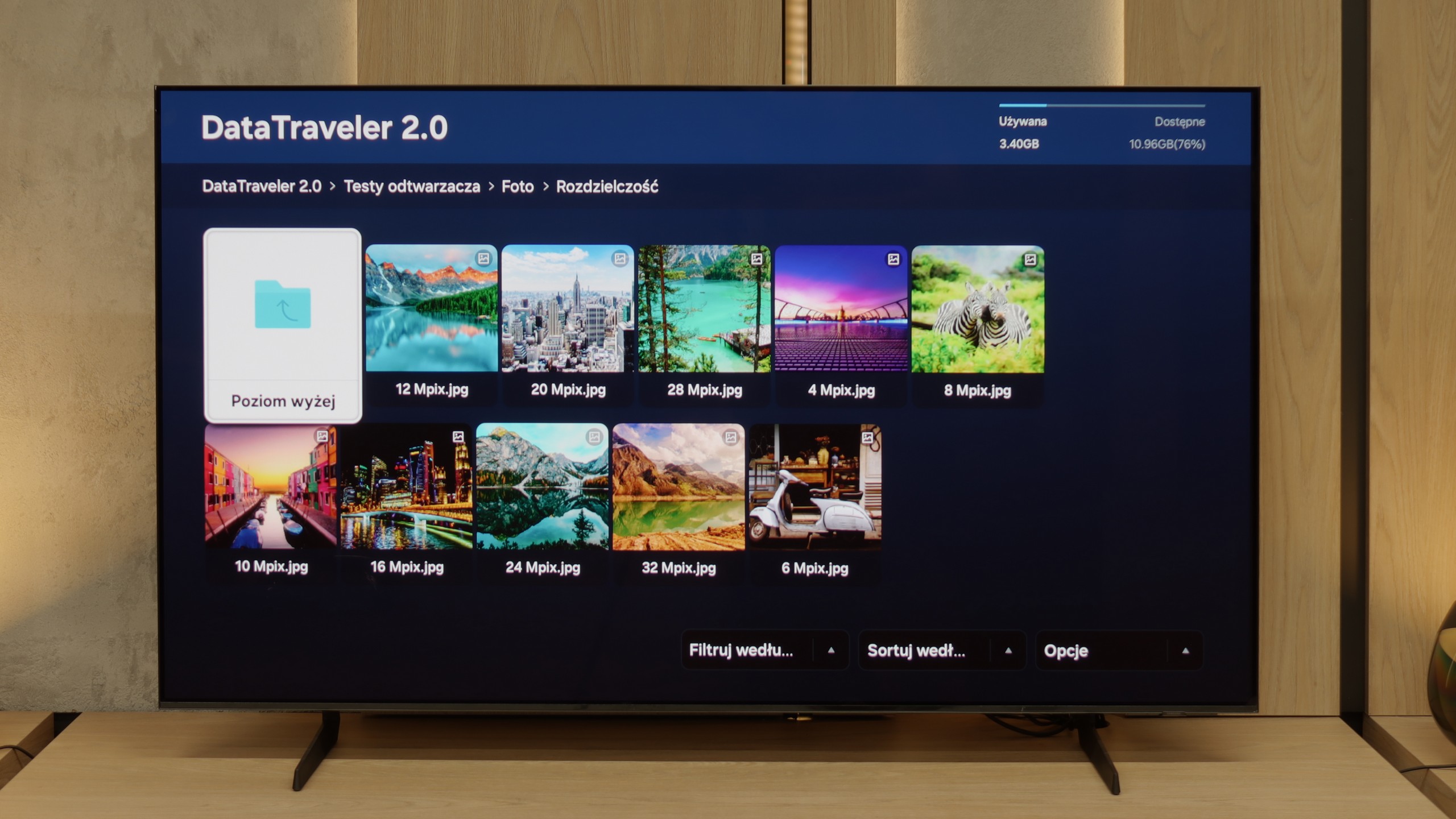
The built-in player in Philips OLED769 generally performs well. Although it may lack support for non-standard formats, which could be an issue for specific users, most should be satisfied with the available options. The built-in player in the TitanOS system allows for the reading of Polish characters and changing the font colour, which additionally makes everyday usage easier. Thanks to these features, playing files from USB is comfortable and versatile.
The built-in media player in the S85F performs excellently – practically everything you throw on a USB stick or hard drive will be played back without the slightest issue. Minor shortcomings only arise in the support of some less common photo formats, but for the vast majority of you, this will be more than sufficient. Therefore, it can be confidently stated that for home use, the built-in player is more than solid.
Apps
6.2/10
8.7/10














































Sound
6.7/10
7.2/10
- Maximum volume-80dB
- Dolby Digital Plus 7.1
- Dolby True HD 7.1
- Dolby Atmos in Dolby Digital Plus (JOC)
- Dolby Atmos in Dolby True HD
- DTS:X in DTS-HD MA
- DTS-HD Master Audio
In the sound category, Philips OLED769 may not offer super dynamic sound, using 2x10W speakers. However, it is worth noting the support for all Dolby and DTS audio formats. This allows users to enjoy high-quality sound with the help of external players, despite the power limitations.
The built-in speakers rated at 20 W on paper may not seem impressive, but in practice, the S85F can be surprising. It sounds really pleasant, and at times you can even pick up a subtle bass, which is not a given in this class of speakers. The TV does not support the DTS format, which unfortunately became a standard for most manufacturers by 2025. A nice surprise is the support for Dolby Atmos. Of course, talking about "spatial" sound with two speakers located at the bottom of the casing would be a slight exaggeration, but it's good that Samsung offers such a feature in this model at all.
Acoustic Measurements
No acoustic data
80dBC (Max)
75dBC


